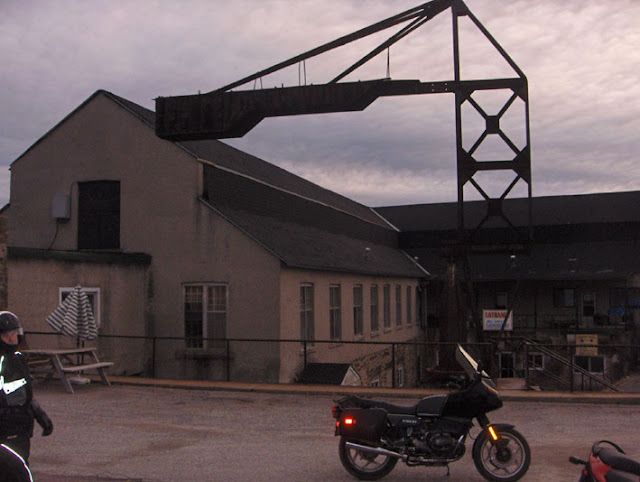I have two of these large and handy wood vises mounted on a workbench. They incorporate a half-nut to permit the screw to be disengaged for quickly releasing the vise jaws.
The Richards Manufacturing Company was incorporated in 1880, but only entered the door hanger and hinge market in 1903 when a factory was erected for just this purpose under the direction of William Fitch.
In addition to a wide selection of door hangers, the Richards' catalogue also contained tools, including grindstones and an interesting "Wizard ratchet wrench."
The Wilcox Manufacturing Company started out as the Wilcox Carpet Sweeper Company in Aurora, Illinois. In 1880, it was reorganized and combined with the Prindle Manufacturing Company (which made parlour door hangers). In 1894, production shifted entirely to sliding hangers for parlour doors, and then expanded to other door hangers, elevator gates, and hardware specialties.
In 1910, Richards purchased the Wilcox firm and incorporated the two firms under the Richards-Wilcox name in 1912.
That same year, the company was also incorporated in London, Ontario. In the subsequent years, factory owned dealerships were established in all the major cities across Canada.
The 20’s, 30’s, 40’s and 50’s saw the introduction of many door and door related products by Richards-Wilcox. These included sectional overhead doors, doors for school gymnasiums, blast-resistant doors, multi-blade doors, aircraft hangar doors, rolling steel doors, sliding fire doors and almost any other specialty applications. Their product line also included power conveyor overhead track systems, and office storage and filing systems.
In 1967, Richards-Wilcox was sold to White Consolidated, operating as a division of White and then Electrolux, which purchased White in 1986. In 1998, the company was sold to Aker RGI, an investor group out of Norway, before returning to private hands in a management buyout in 2004. As for the Canadian company, it was sold in 1986 to three Winnipeg businessmen, and the factory in London closed shortly thereafter. The company, Richards-Wilcox Canada, is now headquartered in Mississauga, Ontario.
For a broader journey through the rise and decline of industry in Aurora, Illinois, visit rodhandeland.com.
As an interesting aside, William Fitch, who had been involved with the formation of the parent company, purchased a 380-acre dairy farm to the west of Aurora, which he named Fitchome Farms. In addition to establishing a herd of purebred Holsteins, he installed a modern milking and bottling plan which began milk delivery in 1915. By the late 1930's, the dairy also boasted an ice-cream shop and glass-enclosed milking parlour where patrons could enjoy their sundaes while watching freshly-cleaned cows being milked by machines. I doubt that would be considered an attraction today.
On a local note, in the town of Ganonoque near where I live, there still stands a 3-ton Richards-Wilcox crane, testimony to the town's bygone industrial heritage. Back in 2011, I emailed the pics to someone at the Canadian company who expressed interest but then never got back to me with any information about the crane.















9 comments:
Taking our house apart we found some boards with the Richard's Wilcox stamp so we looked it up. The boards were likely milled in the mid to late 40's, now they are part of a n outdoor bench.
I would post pics but I'm not sure how to do it on this platform
I would post pics but I'm not sure how to on this platform
You can send them to gerald@vanwyngaarden.ca
Much appreciated!
I just redid a Richards Wilcox vice very similar to the one at the top of this page where the one here says 403 x2 mine is 403 x1 picked it up for 20 bucks at a yard sale I am pretty happy with my find its a great vice
Where was the factory in London located?
Hard to find the address of these old companies. I guess they were so well known, any correspondence just needed the city name. I asked a long time London resident, he says it was located by GSW (General Steel Ware) on Adelaide st., South of the river.
My dad worked at the London factory as a millwright starting right after WWII.
He worked there until he took early retirement in June 1986 after the company was sold, and before it closed. He helped design and build some of the machines in the 70's and early 80's.
The factory was located at the west end of Terrace St just south of the Thames River and west of Adelaide St.
As of now (Jan 2024) Terrace st was extended into the old factory site and the road extension west of Adelaide is now called Hayes St. There is another street called Yvonne Crescent off of Hayes and new homes have been built on what was the old factory site.
Thank you for your information! Any stories or photos you could add are much appreciated!
Post a Comment